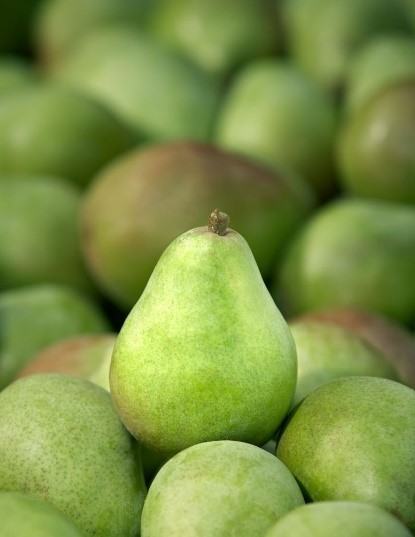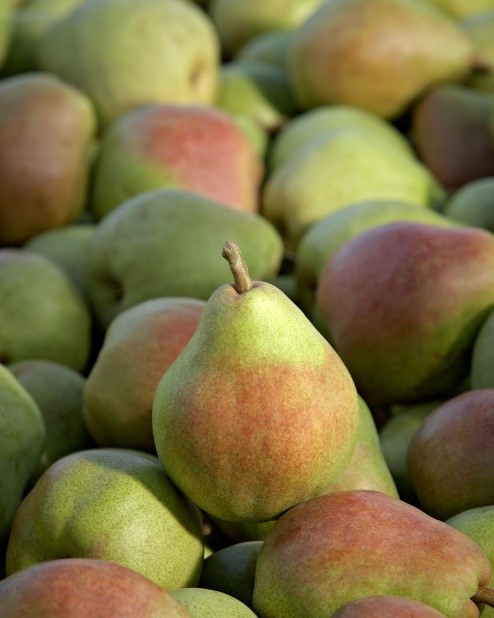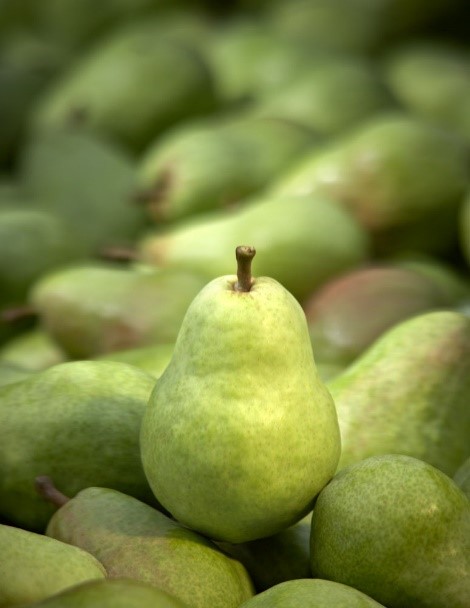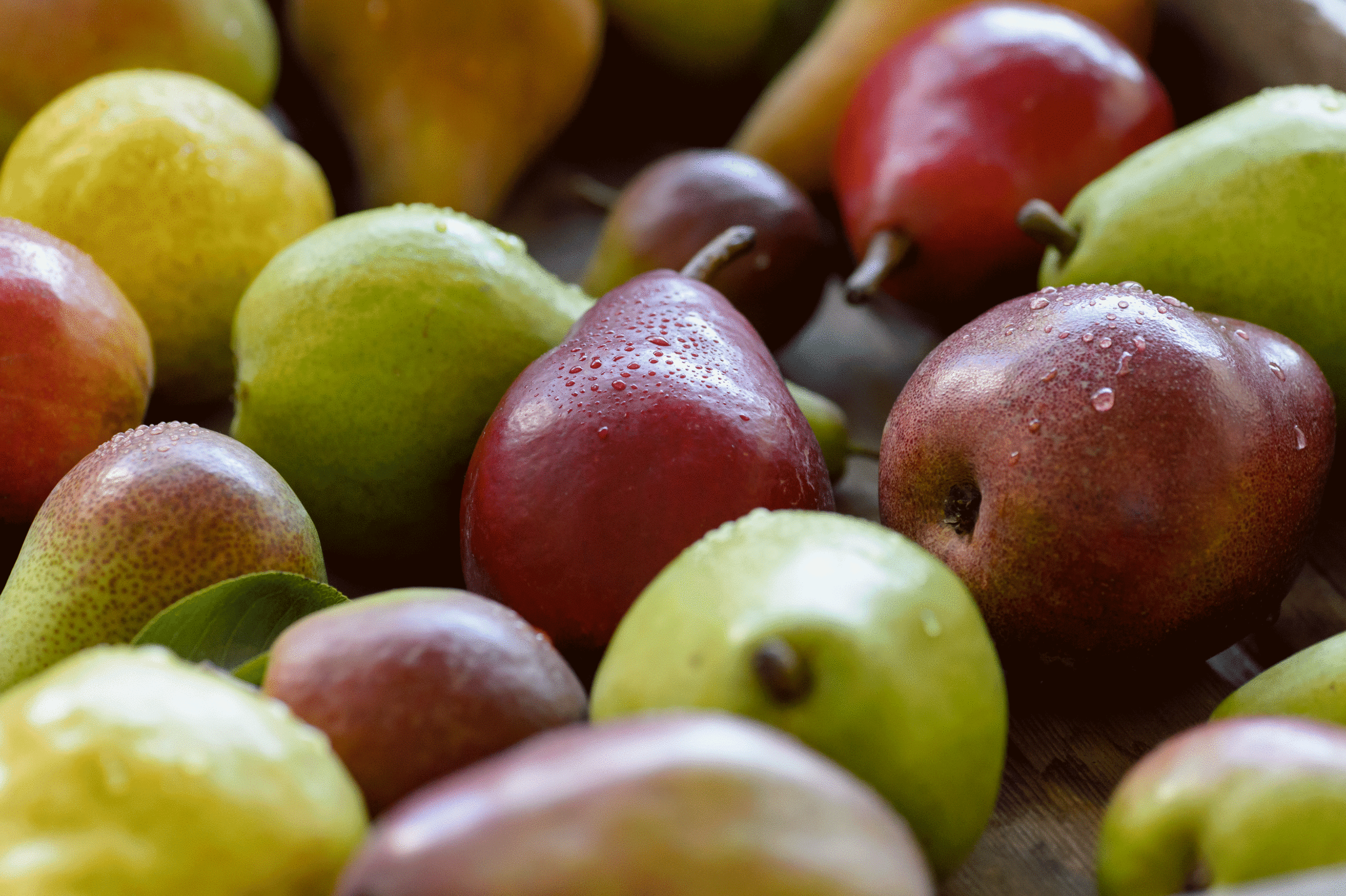My recent work with USA pears has taken my love for the fruit to the next level and I’m truly hoping that those of you who have been following along feel the same.
If you haven’t already, please do check out my post where I share my delicious and easy to make gingered Bosc pear & yogurt bowl recipe, as well as my article discussing the nutritional benefits of pears.
In today’s article, my goal is to teach you some useful facts about the pears you are likely to encounter on your grocery trip.
Which varieties are the sweetest? The firmest? Which are best for different culinary purposes?
I’m going to address all of the above – hope you are as excited as I am!
Let’s start with a fun fact though:
Did you know that 96% of the pear varieties shipped from the USA to Canada are comprised of four different types of pears?
Yep!
Bartlett, Bosc, Anjou and Comice pears are the four USA Pears most strongly represented in the Canadian market.
Given that I’ve already spoken about Bosc at great length in my last post, today’s content will put the spotlight on the other varieties.
Let’s get to it!

Green Anjou
Pronounced ON-ju – these familiar egg-shaped pears are the most widely available pear through the summer months (keep your eyes peeled, summer is almost here!) and are among the most versatile types of pear because they are equally suitable for use in salads, baking or even pureeing.
Green Anjou pears, unlike Bartletts, do not change colour when they ripen and may take three to five days to become ripe after purchase – at which point you can store them in the refrigerator.
Green Anjou’s are juicy when ripe and have a subtle sweet flavour reminiscent of lemon-lime.
As a result of their dense flesh, they are very suitable for any heat-related culinary uses like grilling, baking and so on.

Red Anjou
Egg-shaped and vibrant dark maroon in hue, Red Anjou pears are available through late September into the summer months and are among the most popular pear varieties.
Red Anjou pears only change colour slightly during the ripening process and gentle thumb pressure near the stem (which should yield slightly) is a good indication of ripeness.
Smooth in texture and very juicy, these pears have a mild, sweet flavour.
When used for cooking purposes, Red Anjous share many characteristics with their green relatives but offer a distinct advantage when used skin-on in salads and dishes because of their striking red surface.

Comice
Pronounced ko-Meese – this pear variety has a distinct shape characterized by a very short neck and more robust body and may be the largest pear variety you will see in stores.
Most frequently found green in colour, they may also have some coverage in red with some new varieties being completely red.
They are often referred to as the “Christmas Pear” and find their way into holiday gifts and gift baskets and are available for purchase September through February.
Comice pears have a uniquely fragile skin and should be handled with extra care, although slight surface bruising generally does not indicate any damage to the interior of the fruit.
The ripening of Comice pears is not best judged by changes in colour and instead you should check the neck for ripeness by applying gentle thumb pressure near the stem end, and when the fruit gives slightly, it is ready to eat.
In terms of unique culinary uses, Comice is perhaps best paired with soft cheeses like Brie or Camembert because its sweet buttery flesh compliments those flavour profiles.
They are the variety of pear that is probably best suited for enjoying freshly sliced because their attractive juiciness makes them a less ideal choice for cooking/processing.

Bartlett
Bartletts are characterized by their true pear shape and flavour.
You’ll find them green in store, but notice they will yellow while ripening at room temperature.
You can also find Red Bartlett pears which offer a nice colour contrast, although their flavour profile is quite similar to the green/yellow varieties.
Bartletts are unique in that they are usually the first pears available at the start of the season with the harvest taking place as early as late August and availability remaining through to January/February.
These pears are allowed to ripen after harvest, meaning that you can expect them to be sweeter and smoother than other varieties.
One of the really cool things about Bartlett pears is that they actually get brighter as they ripen!
But how much should you let them ripen before you dig in? That depends how you like them!
If you prefer crunchy and tart – go for it while the skin is green.
Moist and lightly sweet? Yellow-green!
Super-sweet and juicy? Golden yellow!
Beyond everyday use as a healthy snack or salad topper, Bartletts are often considered the “canning pear” and are ideal for use in different types of processing ranging from preserves to chutneys or for use as dried fruit.
Andy De Santis RD MPH



